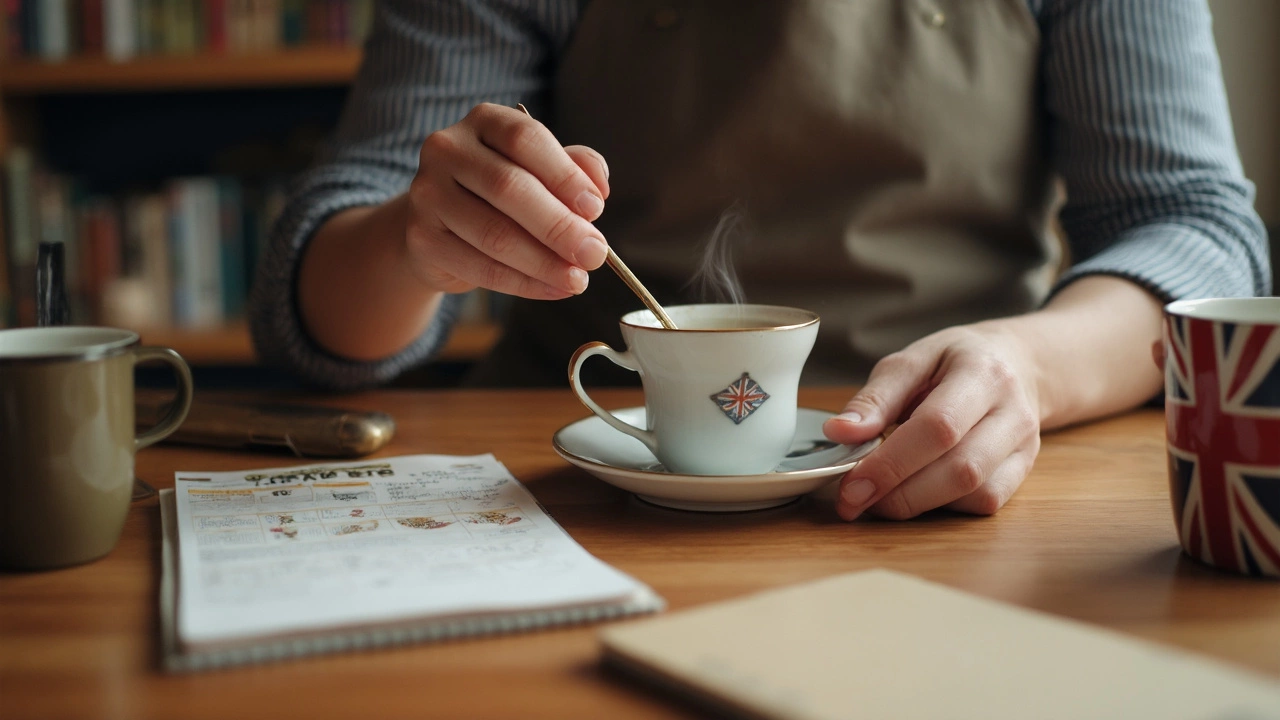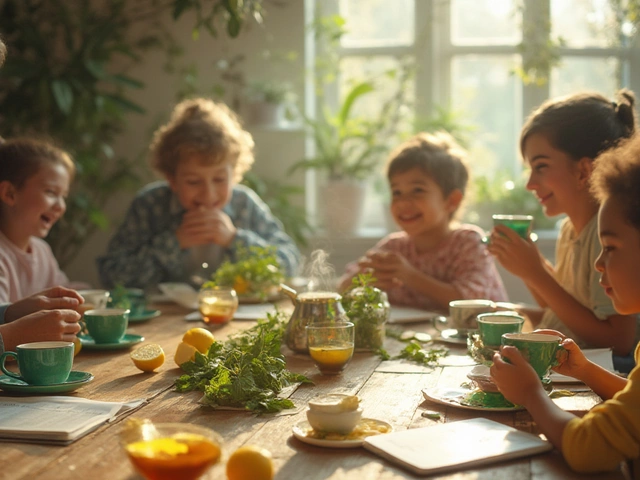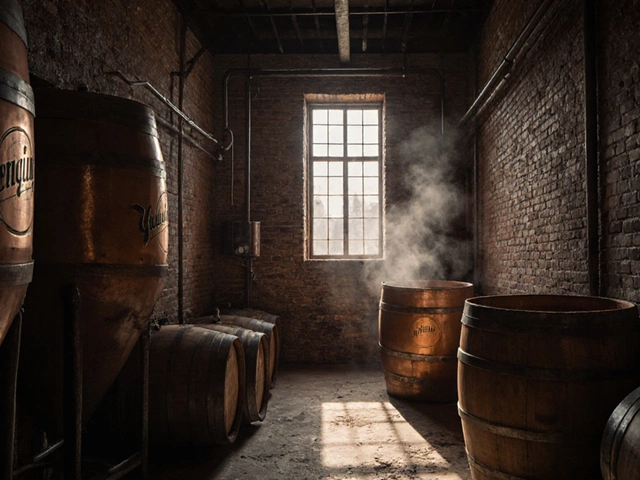So, is tea tasting really a job or just a fancy hobby? Here’s the thing—someone actually gets paid to taste tea for a living. Millions of cups are brewed every day around the world, and it’s tea tasters who decide which blends are worth shipping, selling, and sipping. They aren’t just sipping for pleasure—they’re checking quality, flavor, aroma, and even making sure nothing’s off about the batch.
This isn’t about swirling a cup and calling it a day. Tea tasting is super technical. Tasters develop a kind of “tea memory,” remembering flavors from hundreds (sometimes thousands) of types. Sound intense? That’s because it really is. A slight slip-up—a missed note, a weird aftertaste—can mess up an entire batch and send a bad product out into the world.
If you drink tea that tastes exactly the same every time you buy it, you’ve got a taster to thank. They notice things most people would miss, like if the leaves were stored too damp or if a rare note of mint is coming through in a black tea. These details help keep your favorite brands consistent and drinkable.
- What Does a Tea Taster Actually Do?
- Skills and Training Needed
- A Day in the Life of a Tea Taster
- How to Break into Tea Tasting
What Does a Tea Taster Actually Do?
Alright, picture this: somebody’s entire day revolves around sniffing, slurping, and spitting out dozens—sometimes even hundreds—of teas. That’s literally the job of a tea taster. Their main gig is making sure the flavor, aroma, and appearance of every batch matches the quality that buyers expect. It’s almost like being a tea detective, looking for the smallest clues that something’s off or especially good.
Tea tasters work for tea estates, big brands, auction houses, or specialized importers. Here’s what’s usually on their plate:
- Examining dry leaves for color, size, and how they’re rolled or shaped.
- Brewing tea under consistent, controlled conditions, usually with very strict rules (like 2 grams of leaves per 100ml of water, steeped for exactly 5 minutes).
- Assessing aroma and flavor, paying close attention to notes most people wouldn’t notice—like whether a certain Assam is malty enough, or if a green tea’s got too much astringency.
- Scoring teas using grading sheets to record flavor, briskness, strength, and appearance.
- Cupping: taking a spoonful of brewed tea, slurping loudly to aerate the liquid, then spitting it out (to avoid drinking too much caffeine—you don’t want to jitter through the whole day).
- Writing detailed reports for buyers, who often have no idea what’s really in the bag—they trust the taster’s notes.
- Sometimes, blending: mixing different teas to create consistent flavors year after year, despite the fact that crop quality can change with weather and soil.
If you’re wondering how much tea they go through, check out this quick breakdown:
| Average Cups Tasted/Day | Batches Sampled/Year | Common Workplaces |
|---|---|---|
| 100–200 | Up to 30,000 | Tea estates, companies, auction houses |
There’s also a weird but useful tool in their kit: a tasting spoon, usually silver-plated to avoid messing with the flavor. And yes, tasters often use a special set of white cups and bowls so nothing distracts from the tea’s color and clarity.
This job’s not just about pointing out flaws. Tasters spot when a batch has rare qualities and can fetch a higher price. Because of them, tea companies can keep customers coming back to a classic blend knowing it’ll taste like it always has—even if the weather or soil changed on the farm that year.
Skills and Training Needed
Think you can just sip a few cups and call yourself a tea taster? Not quite. The tea tasting profession calls for a sharp set of skills and a special kind of training, way beyond what you’d pick up in your local café.
First, let’s talk taste buds. Tasters have to train their palate to pick out the tiniest differences between teas. It’s not just about liking the drink—you need to spot flavors, detect off-notes, and remember what you tasted from previous samples down to the smallest detail. This means drinking and comparing hundreds of teas every week, building what insiders call a “tea memory.”
- Sensory skills: A top-level taster can tell if leaves were picked a little late just from the aroma.
- Focus and patience: Some days it’s non-stop tasting, so you’ve got to stay sharp and avoid taste fatigue.
- Decision making: Buyers count on your call when they’re spending big money on batches—you need to be sure about what you say.
You don’t just wake up with these skills. Some tasters start by growing up around tea estates or move through the ranks from entry-level jobs like leaf grading. There are even formal training courses now—look up programs at places like the Indian Institute of Plantation Management or the UK’s Tea Academy.
And here’s a cool fact: it can take two to five years of daily practice before someone’s trusted to make key decisions on their own. At big tea companies, new recruits work alongside experienced tasters, learning how to “slurp” tea (it really does help to taste and smell at once) and write tasting notes in code the company understands.
| Skill | Why it Matters |
|---|---|
| Smell & Taste Sensitivity | Picks out subtle flavors and detects faults |
| Attention to Detail | Consistency in products depends on this |
| Record Keeping | Keeps samples organized and feedback thorough |
| Patience & Endurance | Can mean hours of tasting every day |
Bottom line—if you want to work as a tea taster, you’ll need to dedicate some serious effort. But if you’ve got the right nose and a good memory, the skills can definitely be learned with time and practice.

A Day in the Life of a Tea Taster
Ever wondered what a typical day looks like for a tea taster? It’s part science, part memory game, and a lot of sips. Most tasters start early since their mouths are freshest first thing in the morning. That clean palate helps them pick up even the faintest off notes in a cup of tea.
The routine kicks off with preparing samples from different tea batches. Each batch needs strict consistency to compare flavors accurately, so water temperature and steeping times are always the same: 90–95°C for black tea, just under boiling for green tea, and exactly timed steeps—usually 3, 4, and 5 minutes for each trial.
Once brewed, tasters line up the cups—sometimes tasting over 300 samples in a single day if it’s a big harvesting season. They use a silver spoon, slurping tea with a sharp intake of air. Why? That pulls the liquid all over their mouth and up to the nose, boosting their ability to smell and taste every detail.
- Examine the dry leaves’ color, size, and aroma
- Brew and evaluate the wet leaves
- Taste the liquor (the actual brewed tea)
- Take detailed tasting notes and score each batch on a strict scale
- Compare notes from previous batches for consistency
Tasters rarely swallow the samples—they spit most of it out to avoid caffeine overload and fatigue. But even with that, their taste buds start to notice the difference between two Assam teas or a Darjeeling first versus second flush. It’s tiring but becomes second nature with practice.
How exacting is this job? Check out this snapshot from a real tea tasting room:
| Daily Samples Tasted | Average Tasting Time | Cups Spat Out | Tea Types Reviewed |
|---|---|---|---|
| 150–300 | 3–4 hours | 95% | Black, Green, Oolong, White |
After tasting comes the paperwork: every sample gets a number, detailed notes, and sometimes, quick decisions on whether a shipment gets approved or rejected. Tasters review last season’s notes for reference, especially if a farmer wants feedback or the factory needs exact flavor matches. In some companies, tasters might even blend different batches to create the house style you recognize from store shelves.
It sounds repetitive, but every day’s a little different. One morning, you could be tasting rare Himalayan teas; by afternoon, you’re sorting through massive lots from Kenya. There’s a weird satisfaction in finding that perfect flavor—and knowing your judgment keeps tea lovers happy all over the world.
How to Break into Tea Tasting
If you want to break into tea tasting as an actual job and not just taste for fun, here’s what you need to know. First off, there aren’t official degree programs just for tea tasting, but a background in food science, botany, or even agriculture can give you a real boost. Most professional tea tasters start as trainees at tea estates or big tea companies, where it's hands-on training from the get-go.
Internships and apprenticeships are common. Companies like Twinings and Lipton actually run internal programs for new tasters. Tea tasting isn’t something you nail in a few weeks—you’re looking at a few years before you’re trusted to judge commercial batches. Some big companies require their trainees to taste up to 500 different teas just to build what they call a “flavor library.”
Here’s a practical way to start getting noticed:
- Start doing blind tastings at home. Practice by sampling teas from different regions and keep notes about aroma, flavor, and finish.
- Take short courses—there are real workshops run by places like the UK Tea Academy and Specialty Tea Institute in the US.
- Visit local tea shops or estates. Volunteer for tastings and let owners know you’re interested in learning the ropes.
- Network with industry pros on sites like LinkedIn and show up for tea expos. Many careers start with a casual conversation.
The job is still a niche gig. According to a survey from Tea & Coffee Trade Journal in 2023, there are roughly 10,000 full-time tea tasters worldwide. In India, which produces about 22% of the world’s tea, there are fewer than 2,000 certified tasters.
| Country | Estimated Professional Tea Tasters |
|---|---|
| India | ~2,000 |
| China | ~4,500 |
| Sri Lanka | ~800 |
| United Kingdom | ~300 |
| Rest of World | ~2,400 |
If you’re serious, getting into tea tasting is about dedication, curiosity, and tasting as much as you can. Companies look for people who show natural skill, but also the drive to really hone their senses. This isn’t the kind of job you fall into; you need to chase it down and prove your nose and palate can keep up.


